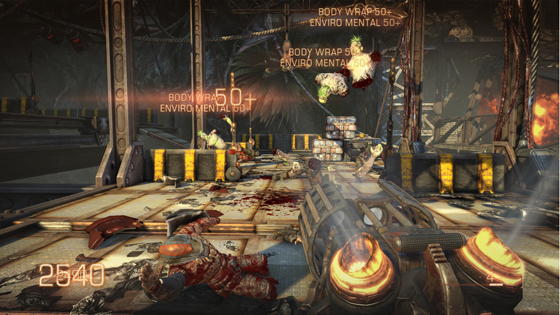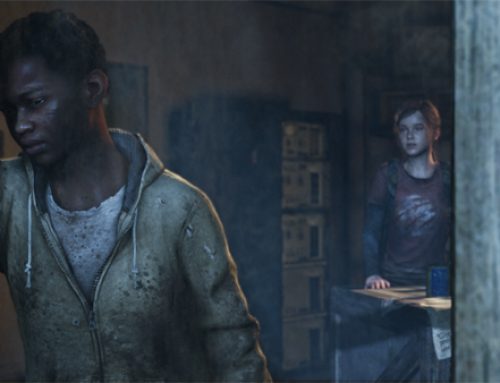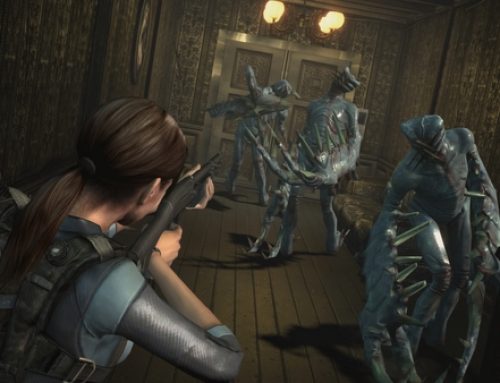Even among gamers, People Can Fly’s “Bulletstorm” is bound to be divisive. The casual observer could be forgiven for thinking the gratuitously violent, foul-mouthed shooter is the natural end point in a cycle that has brought us a never-ending parade of increasingly bloody, over-the-top action epics.
And then there are those of us who’ll say, “Well, duh. That’s the point.”
A huge population of nongamers and gamers alike will undoubtedly be turned off by “Bulletstorm’s” ample profanity, frequent references to sex acts and gory dismemberments. It’s the kind of game that a savvy news producer could edit down to a context-free, 30-second clip for the sake of showing it to parents groups and kicking off a moral panic. (That scenario played out earlier this year when Fox News aired a segment suggesting that “Bulletstorm,” which features sexual terminology and banter but no actual sex, would cause an increase in rapes.)
But to casually dismiss “Bulletstorm” as “just another violent video game” misses the point. The brilliantly written, perfectly tuned shooter smartly and gleefully spoofs its less sophisticated peers by pretending to be one of the gang.
“Bulletstorm” (rated M, $60 for PC, Xbox 360 and PlayStation 3) is a tale of gruff space pirate Grayson Hunt’s burning desire to exact revenge on his former boss, the murderous Gen. Victor Sarrano. Grayson and his boozy, baudy crew were once Sarrano’s goon squad, except they thought they were killing gun runners and human traffickers rather than the journalists and activists. The game opens with Grayson and crew stumbling across Sarrano’s ship. After a kamikaze run, both space pirates and homicidal would-be dictator find themselves marooned on a former resort planet overrun by three factions of mutants and bizarre, man-eating plants.
Shortly after crash-landing, Grayson poaches a weapon called the leash from one of Sarrano’s men. The leash, deployed with a snap of the wrist, can be used to grab enemies from afar and yank them in toward Grayson, who can then shoot or kick the airborne foes. The bulk of the action consists of leashplay mixed with gunplay, with a steady measure of kicking and sliding thrown in.
The leash also patches Grayson into the Skillshot system, which awards points for particularly creative kills. Simply shooting an enemy until he dies will net you 10 points, but if you, say, grab a guy with the leash and kick him into a sharp metal object, you’ll score somewhere in the triple digits. Throughout the game, Grayson will supplement his assault rifle with other, more exotic weapons, each with its own Skillshots. Before too long, you’ll be flinging clusters of bad guys into the air and trying to line up your shots for maximum carnage.

For a game that never takes itself seriously, "Bulletstorm" has a surprisingly well-developed cast of characters and a script that's somewhat heartfelt.
While the action is fast-paced and satisfying, it’s made more enjoyable by a script that’s unexpectedly heartfelt for a game featuring such a liberal dusting of anatomical euphemisms. Grayson and his buddies Ishi and Trishka are surprisingly well-written, and General Sarrano, who talks like an R-rated version of “King of the Hill’s” Cotton Hill, might be gaming’s best villain since “BioShock’s” Andrew Ryan.
A typically sharp moment occurs on an early elevator ride, when Grayson mocks the subtle homoeroticism percolating under the surface of nearly every shooter featuring two male characters. While on an elevator ride, Ishi admires the view, prompting Grayson to ask his half-human, half cyborg friend if he wants to make out. “Just two gruff, hardened military dudes sitting together in an elevator snuggling out their woes in a totally hetero way,” he explains.
Though “Bulletstorm’s” campaign is roughly the same length as “Killzone 3’s,” which I derided for being too short, the game’s six- to eight-hour campaign feels like it’s about the right length. Whereas “Killzone 3” featured tons of vehicles whose potential was barely tapped, People Can Fly’s game feels like it fully explores the Skillshot system and weapon set.
If you’re longing for more “Bulletstorm,” you can replay parts of the campaign as “Echoes,” timed runs through certain stretches where you strive to string together as many Skillshots as quickly as possible. When you’re finished, your scores are uploaded to a leaderboard.
The game’s only true online mode is “Anarchy,” in which up to four players battle increasingly larger waves of bad guys. Unlike other, traditional horde modes, though, your team will need to achieve a certain collective score to advance to the next wave. Fall short, and you’ll replay your current wave. I tried this mode out with a friend and had a ton of fun with it. If you can round up three or four players, it’d be a fun challenge trying to get the hang of things.
What I liked about Anarchy was that it had its own Skillshot system tailored for multiple players. Yeah, you can gear points for pulling off the same moves that worked in the campaign, but for truly high scores you’ll need to coordinate with teammates to rip guys apart with your leashes, or to have one player kick an enemy up into the air while everyone else shoots him. The mode has that easy-to-learn, tough-to-master feel that should extend the life of the game for at least another month or two, if not inspire some imitators.




